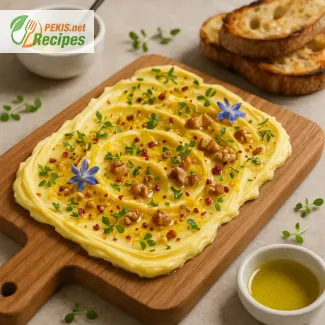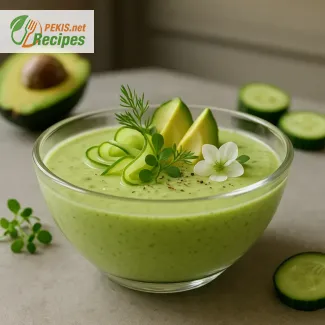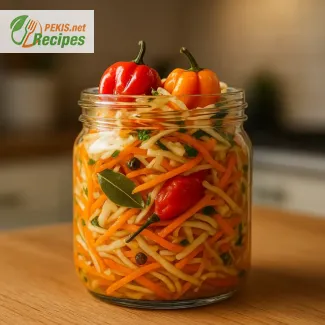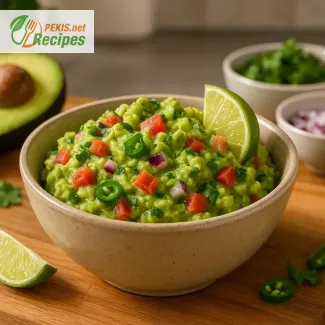
A modern twist on classic entertaining: Butter Board redefined
The art of effortless hosting with flavor, texture, and shareability
In the world of modern food presentation, the rise of the Butter Board Party Platter has reimagined the concept of communal snacking. More than a fleeting trend, this shareable centerpiece merges visual appeal, bold flavors, and simple ingredients into a platter that invites guests to gather, dip, and indulge. Unlike traditional cheese or charcuterie boards, the butter board emphasizes creamy richness, paired with fresh herbs, spices, and edible accents spread across a serving surface. It's a sensory experience that blends rustic elegance with playful creativity—ideal for gatherings, celebrations, or an impromptu get-together.
At its core, the butter board recipe embraces the idea of casual sophistication. There's no cooking involved, just high-quality butter, room for experimentation, and a bit of culinary styling. Whether arranged on a wooden board, slate, or marble tray, the spread becomes a canvas for culinary expression. Think whipped butter swirls infused with garlic, citrus zest, or honey, crowned with chili flakes, pickled onions, toasted nuts, or edible flowers. Served with warm bread, crispy crackers, or artisan sourdough, the platter is a visual and flavorful invitation to dive in.
The virality of the butter board trend stems from its versatility and user-generated flair. Inspired by home cooks and culinary creators across platforms, it has quickly become a staple for snack boards, brunch tables, and themed parties. Its charm lies in the interactive nature—guests don't just eat; they experience. Tearing a piece of bread and sweeping it across a textured landscape of butter and toppings becomes a moment of shared indulgence. It transforms hosting from a chore into a celebration of simple, vibrant ingredients.
The butter board’s adaptability allows it to shift effortlessly between seasonal variations and flavor profiles. Autumn boards might feature roasted garlic, sage, and apple slices; summer versions could play with basil, cherry tomatoes, and lemon zest. There's no single “right way” to craft one—it’s a format that welcomes creativity, making it perfect for personalized entertaining. For those seeking dairy-free alternatives, soft plant-based spreads can mimic the same creamy base, expanding the appeal to diverse dietary preferences without compromising style.
Beyond its flavor, the butter board platter has established itself as a visual focal point for modern gatherings. Its design-forward aesthetic taps into current dining values: beauty, informality, and conversation. Hosts are no longer bound by formal place settings—instead, boards encourage movement, storytelling, and shared enjoyment. This freedom resonates strongly with contemporary entertaining ideals: flexible, inclusive, and centered on connection through food.
This platter also provides a platform to highlight local ingredients and artisanal products. From herbed compound butters to foraged garnishes and hand-shaped sourdough, each element can reflect regional flair or personal culinary stories. With minimal prep and maximum wow factor, it’s no wonder this viral snack board has claimed its place in the spotlight.
Whether you’re planning a laid-back movie night, a bridal brunch, or a summer garden party, this recipe transforms the act of snacking into an immersive, memorable moment. It’s more than a recipe—it’s an invitation to gather, explore, and savor.
- Let the unsalted butter sit at room temperature until it becomes soft and spreadable. You may also use whipped butter for easier spreading.
- On a clean wooden board, marble slab, or slate, use a spoon or offset spatula to spread the butter evenly across the surface in smooth or decorative waves.
- Sprinkle sea salt flakes and lemon zest evenly over the butter.
- Drizzle honey across the top using a spoon for a light sweet contrast.
- Add crushed pink peppercorns, fresh thyme leaves, and toasted walnuts for crunch and aroma.
- Garnish with edible flowers, microgreens, and a light drizzle of extra virgin olive oil to finish.
- Serve immediately with sourdough bread slices or artisan crackers placed around the board.
Creative upgrades and pro tips for your next butter board
Transform your spread with flavor pairings, healthier swaps, and common pitfalls to avoid
The butter board might appear simple at first glance, but elevating this dish requires a blend of creativity, balance, and technique. While the original concept is rich and indulgent, it's also a blank canvas for culinary expression. By exploring ingredient variations and mindful choices, you can enhance both the flavor complexity and the nutritional value without sacrificing the visual appeal that makes this viral snack so irresistible.
Choose the right base: butter quality matters
One of the most crucial elements is the quality of the butter. Opt for European-style butter with a higher fat content (82% or more), which lends a creamier texture and more intense flavor. Cultured butter, known for its slight tanginess, brings a subtle depth that balances sweet and savory toppings. For a lighter version, whipped butter offers more volume and spreads easily, creating an airy presentation.
If you're looking for a plant-based alternative, there are now artisan non-dairy butters made from coconut oil, cashews, or oats that maintain a creamy consistency and can be flavored just as well. These also cater to guests with lactose intolerance or vegan preferences without compromising on taste or texture.
Layer flavors for contrast and cohesion
A well-composed butter board should present layers of flavor: salty, sweet, acidic, and herbal. Adding lemon zest offers brightness and balances the richness of the butter. Drizzled honey or maple syrup introduces sweetness, while crushed pink peppercorns or Aleppo chili flakes provide gentle heat. Nuts like toasted walnuts, hazelnuts, or even spiced pecans add texture and depth.
For an aromatic touch, try finely chopped rosemary, chives, or basil, which give the board a garden-fresh note. You can also incorporate pickled shallots, thinly sliced radishes, or roasted garlic paste to deepen the flavor profile and offer a contrast to the smoothness of the butter.
Homemade is always better – here’s why
Crafting a butter board at home ensures control over ingredient quality, presentation, and flavor customization. Store-bought spreads often contain stabilizers or excessive salt, while homemade versions allow for clean, whole ingredients. Moreover, preparing it yourself enables better alignment with seasonal availability—using fresh herbs from your garden or sourcing local honey can bring an added layer of authenticity.
There’s also a personal element to the experience. Arranging the board yourself invites artistry and creates a visual centerpiece that reflects your own style. Whether you lean minimalist or maximalist, a homemade butter board can be adapted to suit any occasion, from brunches to cocktail parties.
Common mistakes and how to avoid them
One of the most frequent errors is overcrowding the board. While it’s tempting to showcase a wide variety of toppings, too many flavors can overwhelm the butter and lead to imbalance. Aim for five to seven elements, focusing on synergy between sweet, savory, and crunchy components.
Another misstep is serving the butter too cold. Cold butter is difficult to spread and dulls the flavors. Always allow the butter to soften at room temperature before assembling, and if possible, use a whipped version to improve spreadability and mouthfeel.
Using bread that’s too thin or too brittle is another issue. Choose thick-cut sourdough, rustic baguette slices, or crispy seeded crackers that can handle the richness without crumbling or becoming soggy. Toasting your bread lightly before serving will also enhance texture and flavor.
Health-conscious enhancements for a smarter spread
If you're seeking a healthier take, try infusing the butter with ingredients that offer nutritional value. Additions like flaxseed, chia seeds, or hemp hearts not only provide crunch but also bring omega-3 fatty acids and dietary fiber. Swapping honey with date syrup or agave nectar can lower the glycemic index.
To reduce sodium, opt for herbal salt blends or skip salt altogether in favor of umami-rich elements like miso paste or nutritional yeast. Replacing part of the butter with a smooth white bean purée or avocado mash can lower fat content while adding creaminess and protein.
Seasonal inspiration and flavor themes
Customize your butter board with seasonal influences. In spring, incorporate fresh peas, mint, and lemon zest; in summer, try heirloom tomatoes, basil, and balsamic glaze; in autumn, figs, cinnamon butter, and roasted nuts; and in winter, experiment with cranberries, rosemary, and orange zest. The flexibility of the butter board makes it a dynamic option for year-round entertaining.
Themed boards—such as Mediterranean (with sun-dried tomatoes, olives, and za’atar) or Asian-inspired (with ginger-infused butter, sesame seeds, and pickled daikon)—can cater to diverse palates and occasions. Using global flavors introduces guests to new pairings while keeping the concept familiar.
Through thoughtful selection of ingredients, avoidance of common mistakes, and openness to experimentation, the butter board transforms from a simple trend into a refined culinary expression. It’s not only about how it looks on the table but how it invites people to share, savor, and connect.
Allergens present in the recipe:
- Dairy (butter)
- Tree nuts (walnuts)
- Gluten (bread/crackers, depending on choice)
Allergen substitution tips:
- Replace butter with dairy-free plant-based butter (made from coconut or oat oil blends) to make it dairy-free.
- Use toasted sunflower seeds or pumpkin seeds instead of walnuts for a nut-free option.
- Choose gluten-free crackers or gluten-free sourdough bread to avoid gluten exposure.
Vitamins and minerals per serving (approximate):
- Vitamin A: 420 µg – Supports vision and immune function
- Vitamin E: 1.8 mg – Antioxidant that protects cells from damage
- Calcium: 25 mg – Maintains bone strength
- Magnesium: 22 mg – Supports nerve and muscle function
- Iron: 0.7 mg – Essential for red blood cell formation
- Zinc: 0.5 mg – Strengthens immune system and aids wound healing
Antioxidants per serving (approximate):
- Phenolic compounds (from olive oil): 15 mg – Reduce inflammation and oxidative stress
- Flavonoids (from thyme, lemon zest, microgreens): 12 mg – May help regulate cellular activity and fight free radicals
- Vitamin E (from nuts and olive oil): 1.8 mg – Protects fatty acids and prevents oxidative damage





